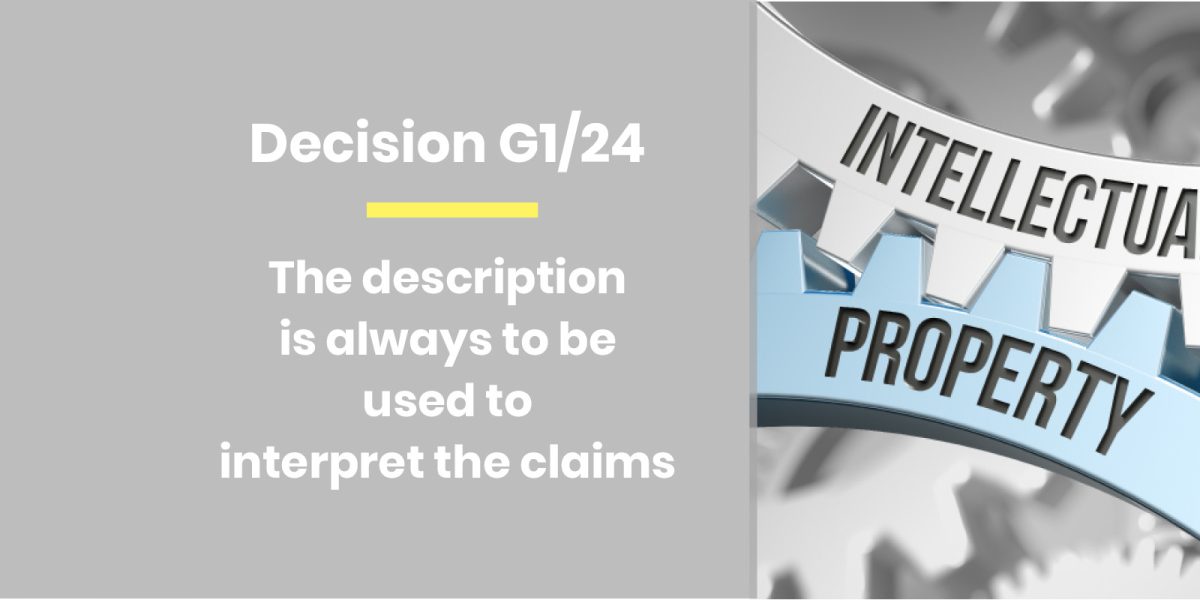-
Services
-

About a year ago we wrote about a referral to the Enlarged Board of Appeal, G1/24, which related to the use of description in interpretation of claims. The decision has now been given, according to which the description is to always be used when interpreting the claims. Thus, the EBoA did not answer the third question (is it possible to disregard a definition given in the description of a term used in the claims?).
The European Patent Office has traditionally been of the opinion that Article 69(1) EPC and the Protocol on the Interpretation of Article 69 EPC, according to which the extent of the protection conferred by an EP application or an EP patent is determined by the claims, but the description and drawings shall be used to interpret the claims, only concerns courts of law, not the EPO itself.
During the years this opinion has however partly changed, and the opinions as well as the decisions of the Boards of Appeal have diverged at the EPO. Thus, a referral was made to the EBoA. In the case at the basis of the referral, the independent claim had a term, which when interpreted as is typical in the field, made the claim novel, whereas when interpreted as defined in the description, made the invention previously known.
Furthermore, he Court of Appeal of the UPC gave, in March 2024, a decision UPC_CoA_335/2023, according to which the description and drawings are always to be used to interpret the claims, instead of being used only for resolving unclarities.
The decision of the EBoA is unambiguously that even though the claims are the starting point and the basis for assessing the patentability, the description and drawings are to always be used for interpreting them. It is thus not permitted to consult the description only when the person skilled in the art does not understand the claim on its own, or when the claim is unclear.
The referral also requested a decision on the question on which article of the EP the decision is based. The referral presented as options Article 69 and its Protocol on Interpretation, or alternatively Article 84. According to the EBoA, neither is a fully satisfactory basis for the conclusion reached. The first option is clearly intended for infringement actions, while the second is a guidance for the applicant on how to draft the application.
According to the EBoA, there is thus no clear basis in the EPC on how to interpret the claims when assessing patentability.
The EBoA concludes that as has been summarised by the referring board, the boards of appeal are unanimous in that the claims from the starting point and the basis for assessing the patentability. However, there are two lines in the decisions of the boards on appeal on the question of whether the description and drawings are to always be used for interpretation of the claims, only when something is unclear.
According to the EBoA, the latter interpretation, i.e. that the description and drawings are to be used only when something is unclear, is however contrary to the terminology of Article 69, and thus against its principle. Further, it is contrary to decisions of courts.
This led the EBoA to conclude, that it is not in the interest of the EPO to deal with this issue in a manner that is different on how it is dealt with in those courts, that deal with patents granted by the EPO.